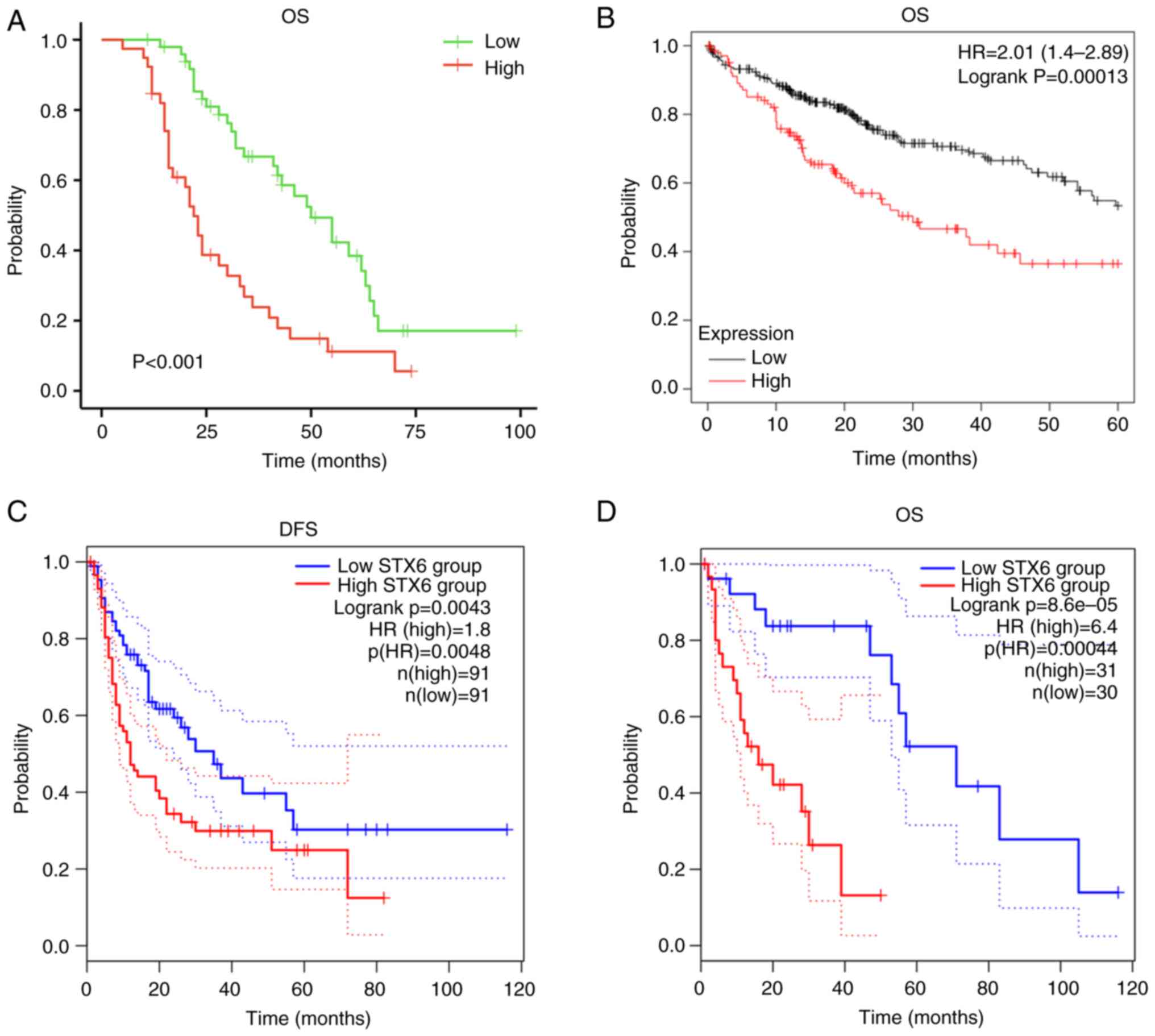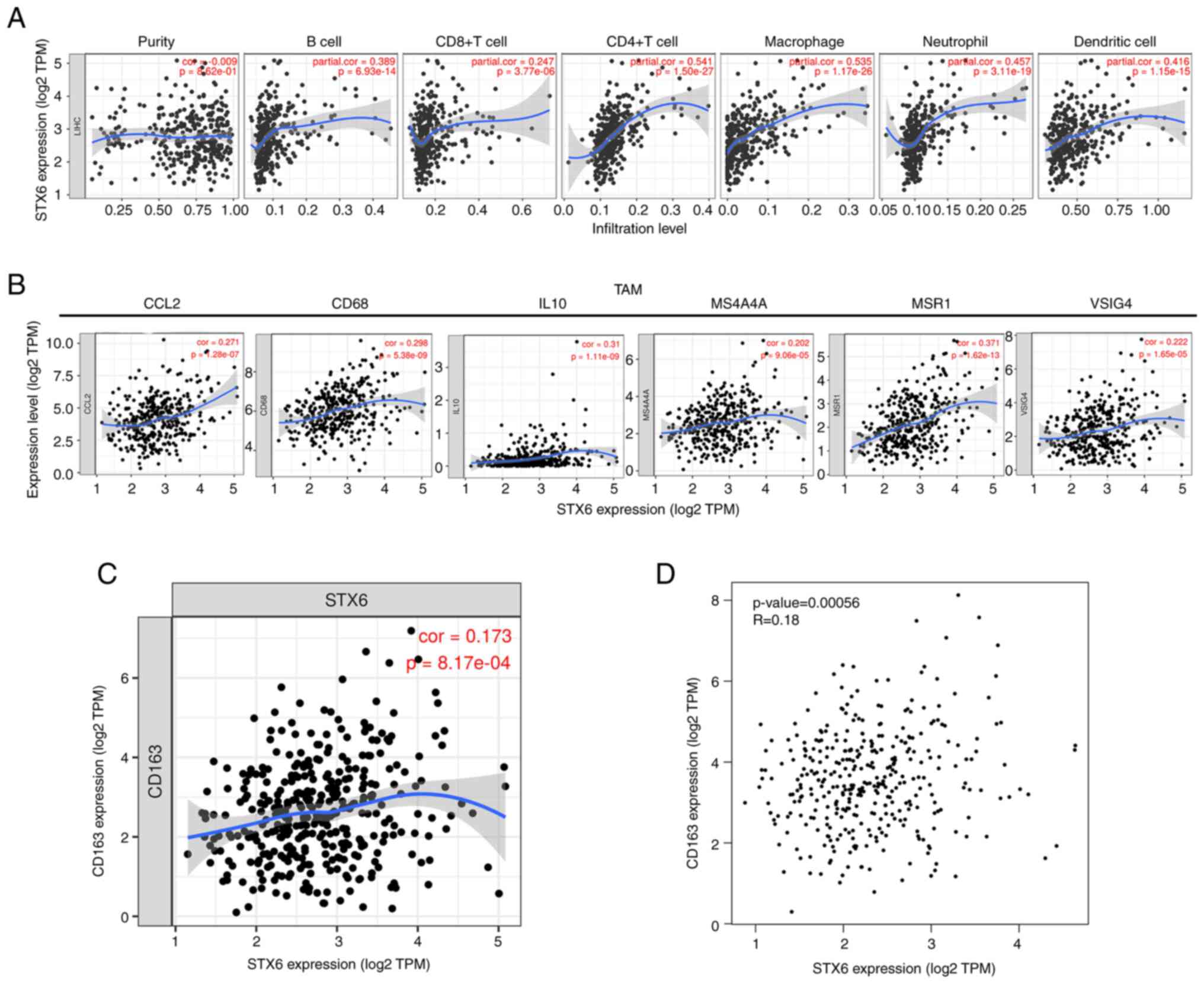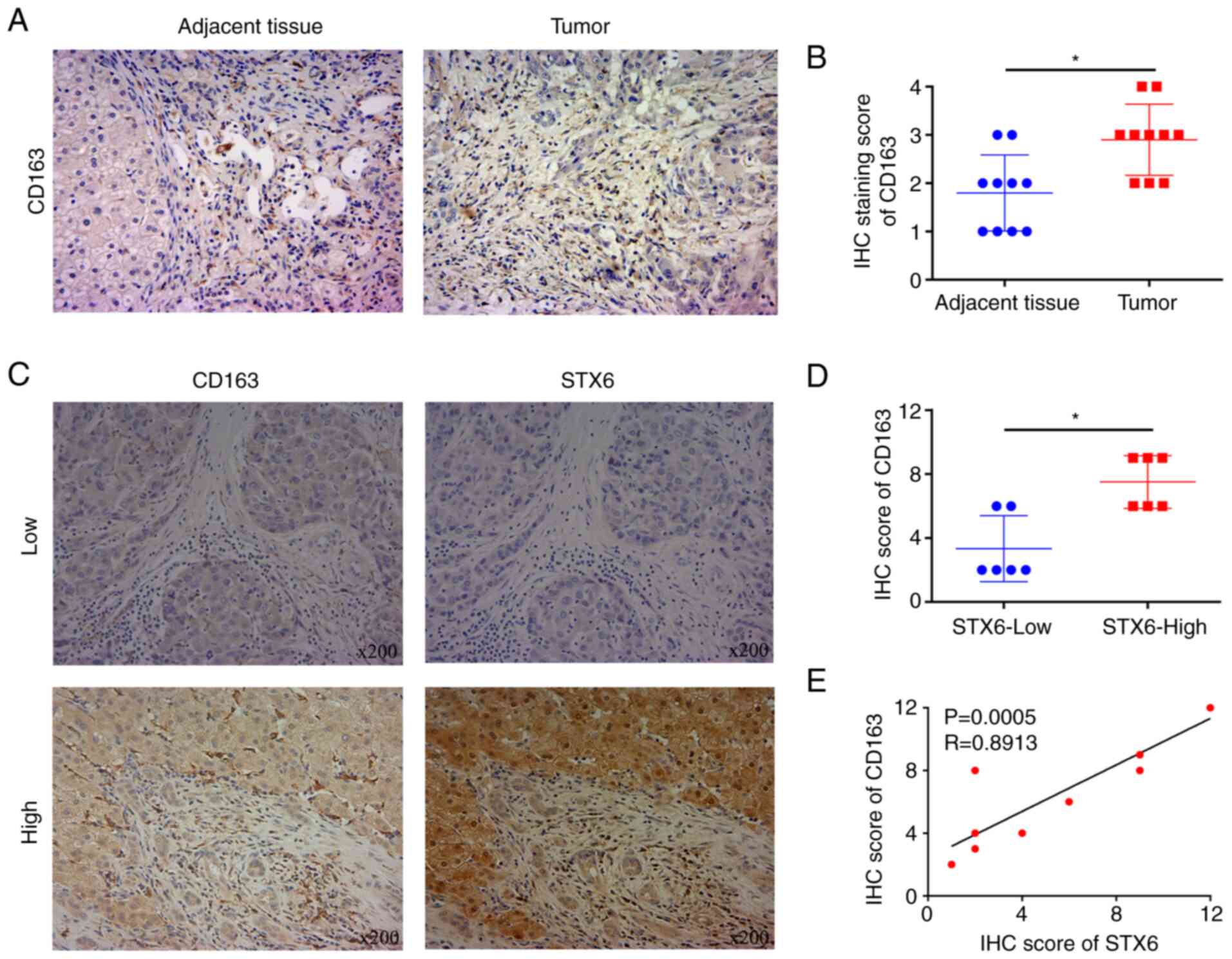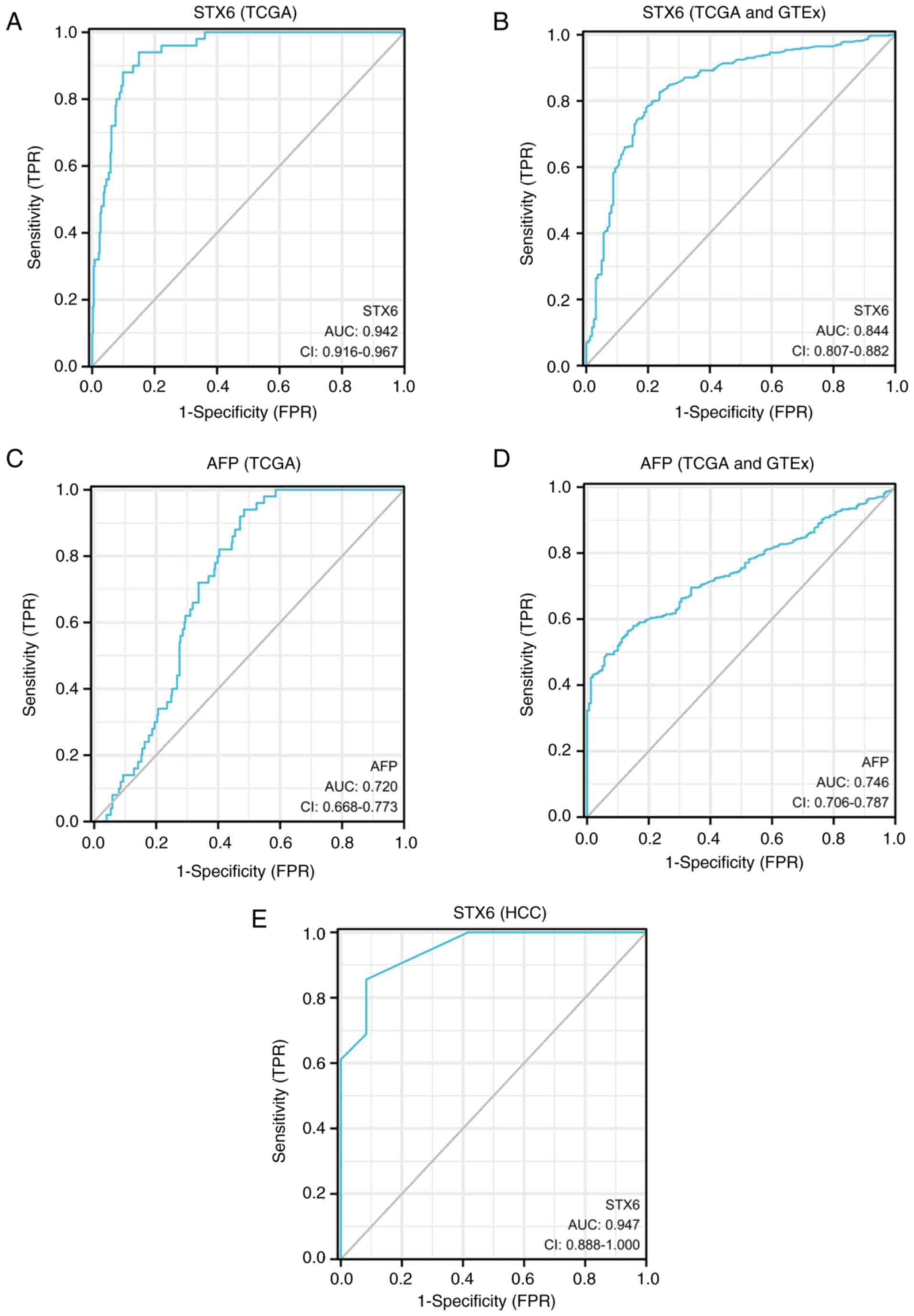|
1
|
Anwanwan D, Singh SK, Singh S, Saikam V
and Singh R: Challenges in liver cancer and possible treatment
approaches. Biochim Biophys Acta Rev Cancer. 1873:1883142020.
View Article : Google Scholar : PubMed/NCBI
|
|
2
|
Orcutt ST and Anaya DA: Liver resection
and surgical strategies for management of primary liver cancer.
Cancer Control. 25:10732748177446212018. View Article : Google Scholar : PubMed/NCBI
|
|
3
|
Höglinger GU, Melhem NM, Dickson DW,
Sleiman PM, Wang LS, Klei L, Rademakers R, de Silva R, Litvan I,
Riley DE, et al: Identification of common variants influencing risk
of the tauopathy progressive supranuclear palsy. Nat Genet.
43:699–705. 2011. View
Article : Google Scholar : PubMed/NCBI
|
|
4
|
Bock JB, Matern HT, Peden AA and Scheller
RH: A genomic perspective on membrane compartment organization.
Nature. 409:839–841. 2001. View
Article : Google Scholar : PubMed/NCBI
|
|
5
|
Bock JB, Lin RC and Scheller RH: A new
syntaxin family member implicated in targeting of intracellular
transport vesicles. J Biol Chem. 271:17961–17965. 1996. View Article : Google Scholar : PubMed/NCBI
|
|
6
|
Wendler F and Tooze S: Syntaxin 6: The
promiscuous behaviour of a SNARE protein. Traffic. 2:606–611. 2001.
View Article : Google Scholar : PubMed/NCBI
|
|
7
|
Du J, Liu X, Wu Y, Zhu J and Tang Y:
Essential role of STX6 in esophageal squamous cell carcinoma growth
and migration. Biochem Biophys Res Commun. 472:60–67. 2016.
View Article : Google Scholar : PubMed/NCBI
|
|
8
|
Zhang PR, Ren J, Wan JS, Sun R and Li Y:
Circular RNA hsa_circ_0002052 promotes osteosarcoma via modulating
miR-382/STX6 axis. Hum Cell. 33:810–818. 2020. View Article : Google Scholar : PubMed/NCBI
|
|
9
|
Peak TC, Su Y, Chapple AG, Chyr J and Deep
G: Syntaxin 6: A novel predictive and prognostic biomarker in
papillary renal cell carcinoma. Sci Rep. 9:31462019. View Article : Google Scholar : PubMed/NCBI
|
|
10
|
West ZE, Aitcheson SM, Semmler ABT and
Murray RZ: The trans-SNARE complex VAMP4/Stx6/Stx7/Vti1b is a key
regulator of Golgi to late endosome MT1-MMP transport in
macrophages. Traffic. 22:368–376. 2021. View Article : Google Scholar : PubMed/NCBI
|
|
11
|
Bian Z, Shi L, Kidder K, Zen K,
Garnett-Benson C and Liu Y: Intratumoral SIRPα-deficient
macrophages activate tumor antigen-specific cytotoxic T cells under
radiotherapy. Nat Commun. 12:32292021. View Article : Google Scholar : PubMed/NCBI
|
|
12
|
Mantovani A, Sozzani S, Locati M, Allavena
P and Sica A: Macrophage polarization: Tumor-associated macrophages
as a paradigm for polarized M2 mononuclear phagocytes. Trends
Immunol. 23:549–555. 2002. View Article : Google Scholar : PubMed/NCBI
|
|
13
|
Yamaguchi T, Fushida S, Yamamoto Y,
Tsukada T, Kinoshita J, Oyama K, Miyashita T, Tajima H, Ninomiya I,
Munesue S, et al: Tumor-associated macrophages of the M2 phenotype
contribute to progression in gastric cancer with peritoneal
dissemination. Gastric Cancer. 19:1052–1065. 2016. View Article : Google Scholar : PubMed/NCBI
|
|
14
|
Munir MT, Kay MK, Kang MH, Rahman MM,
Al-Harrasi A, Choudhury M, Moustaid-Moussa N, Hussain F and Rahman
SM: Tumor-associated macrophages as multifaceted regulators of
breast tumor growth. Int J Mol Sci. 22:65262021. View Article : Google Scholar : PubMed/NCBI
|
|
15
|
Cersosimo F, Lonardi S, Bernardini G,
Telfer B, Mandelli GE, Santucci A, Vermi W and Giurisato E:
Tumor-associated macrophages in osteosarcoma: From mechanisms to
therapy. Int J Mol Sci. 21:52072020. View Article : Google Scholar : PubMed/NCBI
|
|
16
|
Wei C, Yang C, Wang S, Shi D, Zhang C, Lin
X, Liu Q, Dou R and Xiong B: Crosstalk between cancer cells and
tumor associated macrophages is required for mesenchymal
circulating tumor cell-mediated colorectal cancer metastasis. Mol
Cancer. 18:642019. View Article : Google Scholar : PubMed/NCBI
|
|
17
|
Arvanitakis K, Koletsa T, Mitroulis I and
Germanidis G: Tumor-associated macrophages in hepatocellular
carcinoma pathogenesis, prognosis and therapy. Cancers (Basel).
14:2262022. View Article : Google Scholar : PubMed/NCBI
|
|
18
|
Shapouri-Moghaddam A, Mohammadian S,
Vazini H, Taghadosi M, Esmaeili SA, Mardani F, Seifi B, Mohammadi
A, Afshari JT and Sahebkar A: Macrophage plasticity, polarization,
and function in health and disease. J Cell Physiol. 233:6425–6440.
2018. View Article : Google Scholar : PubMed/NCBI
|
|
19
|
Mantovani A, Marchesi F, Malesci A, Laghi
L and Allavena P: Tumour-associated macrophages as treatment
targets in oncology. Nat Rev Clin Oncol. 14:399–416. 2017.
View Article : Google Scholar : PubMed/NCBI
|
|
20
|
Kawamura K, Komohara Y, Takaishi K,
Katabuchi H and Takeya M: Detection of M2 macrophages and
colony-stimulating factor 1 expression in serous and mucinous
ovarian epithelial tumors. Pathol Int. 59:300–305. 2009. View Article : Google Scholar : PubMed/NCBI
|
|
21
|
Bao D, Zhao J, Zhou X, Yang Q, Chen Y, Zhu
J, Yuan P, Yang J, Qin T, Wan S and Xing J: Mitochondrial
fission-induced mtDNA stress promotes tumor-associated macrophage
infiltration and HCC progression. Oncogene. 38:5007–5020. 2019.
View Article : Google Scholar : PubMed/NCBI
|
|
22
|
Bover LC, Cardó-Vila M, Kuniyasu A, Sun J,
Rangel R, Takeya M, Aggarwal BB, Arap W and Pasqualini R: A
previously unrecognized protein-protein interaction between TWEAK
and CD163: Potential biological implications. J Immunol.
178:8183–8194. 2007. View Article : Google Scholar : PubMed/NCBI
|
|
23
|
Murray RZ, Wylie FG, Khromykh T, Hume DA
and Stow JL: Syntaxin 6 and Vti1b form a novel SNARE complex, which
is up-regulated in activated macrophages to facilitate exocytosis
of tumor necrosis factor-alpha. J Biol Chem. 280:10478–10483. 2005.
View Article : Google Scholar : PubMed/NCBI
|
|
24
|
Xiong J, Feng Z, Li Z, Zhong T, Yang Z, Tu
Y, Xiao T, Jie Z and Cao Y: Overexpression of TWA1 predicts poor
prognosis in patients with gastric cancer. Pathol Res Pract.
215:1525942019. View Article : Google Scholar : PubMed/NCBI
|
|
25
|
Tang Z, Li C, Kang B, Gao G, Li C and
Zhang Z: GEPIA: A web server for cancer and normal gene expression
profiling and interactive analyses. Nucleic Acids Res. 45((W1)):
W98–W102. 2017. View Article : Google Scholar : PubMed/NCBI
|
|
26
|
Lánczky A, Nagy Á, Bottai G, Munkácsy G,
Szabó A, Santarpia L and Győrffy B: miRpower: A web-tool to
validate survival-associated miRNAs utilizing expression data from
2178 breast cancer patients. Breast Cancer Res Treat. 160:439–446.
2016. View Article : Google Scholar : PubMed/NCBI
|
|
27
|
Li T, Fan J, Wang B, Traugh N, Chen Q, Liu
JS, Li B and Liu XS: TIMER: A web server for comprehensive analysis
of tumor-infiltrating immune cells. Cancer Res. 77:e108–e110. 2017.
View Article : Google Scholar : PubMed/NCBI
|
|
28
|
Becht E, Giraldo NA, Lacroix L, Buttard B,
Elarouci N, Petitprez F, Selves J, Laurent-Puig P, Sautès-Fridman
C, Fridman WH and de Reyniès A: Erratum to: Estimating the
population abundance of tissue-infiltrating immune and stromal cell
populations using gene expression. Genome Biol. 17:2492016.
View Article : Google Scholar : PubMed/NCBI
|
|
29
|
Racle J, de Jonge K, Baumgaertner P,
Speiser DE and Gfeller D: Simultaneous enumeration of cancer and
immune cell types from bulk tumor gene expression data. Elife.
6:e264762017. View Article : Google Scholar : PubMed/NCBI
|
|
30
|
Li T, Fu J, Zeng Z, Cohen D, Li J, Chen Q,
Li B and Liu XS: TIMER2.0 for analysis of tumor-infiltrating immune
cells. Nucleic Acids Res. 48((W1)): W509–W514. 2020. View Article : Google Scholar : PubMed/NCBI
|
|
31
|
Goldman MJ, Craft B, Hastie M, Repečka K,
McDade F, Kamath A, Banerjee A, Luo Y, Rogers D, Brooks AN, et al:
Visualizing and interpreting cancer genomics data via the Xena
platform. Nat Biotechnol. 38:675–678. 2020. View Article : Google Scholar : PubMed/NCBI
|
|
32
|
Vivian J, Rao AA, Nothaft FA, Ketchum C,
Armstrong J, Novak A, Pfeil J, Narkizian J, Deran AD,
Musselman-Brown A, et al: Toil enables reproducible, open source,
big biomedical data analyses. Nat Biotechnol. 35:314–316. 2017.
View Article : Google Scholar : PubMed/NCBI
|
|
33
|
Hartke J, Johnson M and Ghabril M: The
diagnosis and treatment of hepatocellular carcinoma. Semin Diagn
Pathol. 34:153–159. 2017. View Article : Google Scholar : PubMed/NCBI
|
|
34
|
Kulik L and El-Serag HB: Epidemiology and
management of hepatocellular carcinoma. Gastroenterology.
156:477–491.e1. 2019. View Article : Google Scholar : PubMed/NCBI
|
|
35
|
Pan Y, Yu Y, Wang X and Zhang T:
Tumor-associated macrophages in tumor immunity. Front Immunol.
11:5830842020. View Article : Google Scholar : PubMed/NCBI
|
|
36
|
Debruyne EN and Delanghe JR: Diagnosing
and monitoring hepatocellular carcinoma with alpha-fetoprotein: New
aspects and applications. Clin Chim Acta. 395:19–26. 2008.
View Article : Google Scholar : PubMed/NCBI
|
|
37
|
Lu Z, Zuo B, Jing R, Gao X, Rao Q, Liu Z,
Qi H, Guo H and Yin H: Dendritic cell-derived exosomes elicit tumor
regression in autochthonous hepatocellular carcinoma mouse models.
J Hepatol. 67:739–748. 2017. View Article : Google Scholar : PubMed/NCBI
|
|
38
|
Lee WC, Reuben A, Hu X, McGranahan N, Chen
R, Jalali A, Negrao MV, Hubert SM, Tang C, Wu CC, et al: Multiomics
profiling of primary lung cancers and distant metastases reveals
immunosuppression as a common characteristic of tumor cells with
metastatic plasticity. Genome Biol. 21:2712020. View Article : Google Scholar : PubMed/NCBI
|
|
39
|
Ho DW, Tsui YM, Chan LK, Sze KM, Zhang X,
Cheu JW, Chiu YT, Lee JM, Chan AC, Cheung ET, et al: Single-cell
RNA sequencing shows the immunosuppressive landscape and tumor
heterogeneity of HBV-associated hepatocellular carcinoma. Nat
Commun. 12:36842021. View Article : Google Scholar : PubMed/NCBI
|
|
40
|
Galle PR, Foerster F, Kudo M, Chan SL,
Llovet JM, Qin S, Schelman WR, Chintharlapalli S, Abada PB, Sherman
M and Zhu AX: Biology and significance of alpha-fetoprotein in
hepatocellular carcinoma. Liver Int. 39:2214–2229. 2019. View Article : Google Scholar : PubMed/NCBI
|
|
41
|
Luo P, Wu S, Yu Y, Ming X, Li S, Zuo X and
Tu J: Current status and perspective biomarkers in AFP negative
HCC: Towards screening for and diagnosing hepatocellular carcinoma
at an earlier stage. Pathol Oncol Res. 26:599–603. 2020. View Article : Google Scholar : PubMed/NCBI
|
|
42
|
Kim KI, Chung HK, Park JH, Lee YJ and Kang
JH: Alpha-fetoprotein-targeted reporter gene expression imaging in
hepatocellular carcinoma. World J Gastroenterol. 22:6127–6134.
2016. View Article : Google Scholar : PubMed/NCBI
|
|
43
|
Chen T, Dai X, Dai J, Ding C, Zhang Z, Lin
Z, Hu J, Lu M, Wang Z, Qi Y, et al: AFP promotes HCC progression by
suppressing the HuR-mediated Fas/FADD apoptotic pathway. Cell Death
Dis. 11:8222020. View Article : Google Scholar : PubMed/NCBI
|
|
44
|
Shi Y, Ye Z, Lu G, Yang N, Zhang J, Wang
L, Cui J, Del Oozo MA, Wu Y, Xia D and Shen HM:
Cholesterol-enriched membrane micro-domaindeficiency induces
doxorubicin resistancevia promoting autophagy in breast cancer. Mol
Ther Oncolytics. 23:311–329. 2021. View Article : Google Scholar : PubMed/NCBI
|



















